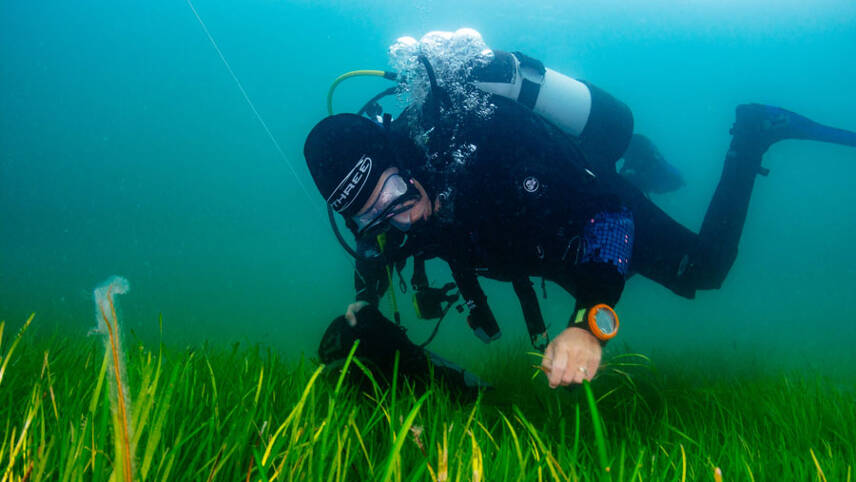Register for free and continue reading
Join our growing army of changemakers and get unlimited access to our premium content

The road to net-zero and biodiversity recovery will be long and winding, with no easy solutions.
However, the promise of nature-based solutions (nbs) has created a perception that perhaps we do have at least some silver bullets. Unfortunately, as we increasingly recognise, good intentions or the purchase of credits do not necessarily translate into hectares of carbon-storing, biodiversity-enhancing habitat that business can use to demonstrate their environmental credentials, or offset against the risk of business as usual.
The challenge lies in utilising nbs as part of a broader toolbox that recognises that they can not be used in isolation, and that something doesn’t come from nothing. If cheap, simple and rapid environmental credits are offered, they are likely not based on reality.
In the marine environment, we’re at a nexus point whereby the expectations brought about by the promise of ‘Blue Carbon’ offer a lot of potential for environmental renewal, but again the reality is that there is no simple solution for rolling out ready programmes. Programmes and systems to harness the opportunities of Blue Carbon remain hamstrung by many bottlenecks. The main problem that we must address is that our oceans are in crisis, lack of action is no longer an option, we can no longer hide behind the view of ‘out of sight out of mind’ as our very planetary life support systems are on the edge of collapse.
Seagrass meadows are one part of what needs to be renewed to stem our ocean crisis. These extensive underwater habitats are considered to be ‘Blue carbon’ solutions due to their net accumulation of carbon. Seagrasses are marine plants that bioengineer their own environment, trap extensive amounts of carbon within marine sediments, create homes for biodiversity, help reduce coastal erosion, filter water and cycle nutrients. They are the powerhouses of our oceans, the superheroes, the stalwarts, the awe.
But for too long our seagrass meadows were treated as the ugly ducklings of marine conservation, ignored and neglected wonders that were allowed to degrade, decline and ultimately disappear from many of the world’s coastlines. Protecting what’s left and bringing back what’s been lost shouldn’t be about credits or biodiversity net-gain, but about restoring necessary life support systems for our oceans and our planet. Given the wonder of seagrass, it’s hardly surprising that those in the sustainability and environmental management fields are looking to seagrass as a great opportunity for environmental investment, as well as a means of offsetting in the context of biodiversity net-gain.
Investing in nature isn’t as simple as existing credit systems like to portray. No number of apps, financial instruments or blockchain will explain that one oak forest is different to the next, or why a saltmarsh in Essex doesn’t function the same as one in the Bristol channel. To save our planet, we need solutions now, not tech into the future or credit systems that will never balance. Investing in nature needs to get back to supporting the core principles of ecology and conservation, to rebuild marine life so that nature can re-carbonise the seascape.
Although no one can readily sell seagrass credits now or in the immediate future, it doesn’t mean that we shouldn’t be re-building these systems to improve our chances of planetary survival. It certainly doesn’t mean that business shouldn’t be investing in it. More than ever, we should be investing in marine nature. We can conserve seagrass, and we’re rapidly getting better at restoring it, we just need longer-term reliable resources to make that happen. Every metric on the state of oceans points to a bleak scenario, if business really wants to bring about sustainability and contribute to investing in nature we cannot wait for credits or technology to save the day, we need to act by protecting and restoring now.
Environmental credits may yet have their day, and innovation may lead to major step changes in bringing finance into nature protection and restoration. But if we want any chance of addressing our current planetary crises, we need investment in nature now, with an unprecedented urgency.
The nature conservation charity sector does what it ‘says on the tin’. It acts to prevent the loss and bring about the recovery of nature, whether in the marine or terrestrial environment, but it needs more financial resources to achieve its aims. It needs investment in nature. UK charities are regulated by a strong governance system and must be founded on a clearly defined charitable mission, with support from independent trustees, subject to public financial auditing, and more often than not these charities have a large public following and/or membership who are able to question and query its actions.
The good news is that the nature conservation charity sector already has the mechanisms to facilitate nature protection and recovery. The appropriate places for nature investment can readily be found for every business, every financial interest. Whether its WWF, the Blue Marine Foundation or Buglife, there is no stronger better model for innovative, evidence based and collaborative working than the nature conservation sector. NGOs need the financial resources that only business can truly give it in order achieve their mission.
Given the crisis our oceans face and the urgent resources required to deliver this change we need to harness the model of the charity sector to act as the responsible implementors for nature investment irrespective of ‘if and when’ credits and tech have their day.
Dr Richard K.F. Unsworth is the chief scientific officer at Project Seagrass. He is an associate professor in biosciences at Swansea University.



Please login or Register to leave a comment.